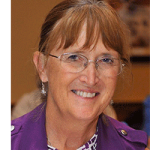 Joan Devine, RN-C, Director of Education, Pioneer Network
Joan Devine, RN-C, Director of Education, Pioneer Network
When we think of creating households for Elders, we often think first about the bricks and mortar, about major renovation or perhaps even an entirely new building. We think about smaller environments, private rooms, a family room with a hearth and fully functioning kitchens where “life happens.” A lovely picture, a wonderful thing, but is it enough to create home? Does building the building guarantee that we have created a place for Elders where they can be who they want to be and all can achieve a life worth living?
Let’s go back to what we learned from the story of “A Tale of Transformation,” by Leslie Grant, PhD of University of Minnesota and LaVrene Norton of Action Pact, Inc. In that story, we were told about 4 phases of culture change; institutional, transformational, neighborhood and household. Within each of these phases, there are specific practices that make up the attributes of each phase. Environment is one. The other four are staffing, organizational design, decision-making and leadership. Looking at this list, it seems like environment is certainly the easiest to visualize, the most black and white in terms of what it looks like — arguably the easiest to change. I can renovate an old building, I can build a new one, I can decorate in the style that says ‘home,’ but does that mean I have created a home, a household for Elders who live there? Without the other four attributes, I think we would all agree that the answer is no, and yet how often do we see in practice all of the focus being put on the building — believing that it is the answer. Perhaps it is because changing the other attributes can be really hard, because they require that we change ourselves. The desire to transform has to be embraced by every individual within our organization, and by the organization itself. Transformation is about “us,” not “them.” Real, deep, meaningful transformation is not easy. If it were, we would not have to worry about whether the kind of homes we are looking for as we age will be there. If it were easy, revolutionizing the culture of aging would be much further along than it is today.
Creating home, a household, is multi-faceted and just plain hard work! The journey from a traditional staffing model where the manager calls all the shots and where staff often rotates to prevent burnout, to a model based on dedicated assignments and self-scheduling is not an easy one. Moving from a traditional top-down management model where decisions are made by formal leaders and directives sent down to the workers and Elders to one where leaders are grown at every level of the organization and where decision-making, and not just the easy decisions like what color to paint the walls, happens closest to the Elder, where work teams are self-directed, now that is hard!
In the movie “Field of Dreams” we are told that “if you build it, they will come.” Build the baseball field, build a ‘house’ for Elders and it will all fall into place. Oh, if it were only that easy! Building a home, a household, for Elders is hard work and requires passion and commitment from everyone. But we can do it.
Don’t stop building and renovating. Find ways to bring the structure of a kitchen for the Elders who live there, but don’t stop there. Bring the joy of the kitchen, the joy of true home to the Elders. Build in meaning and purpose in everything you create. Keep the vision and the passion alive and take steps to shape it into reality each day with each relationship you build and grow along the journey.


